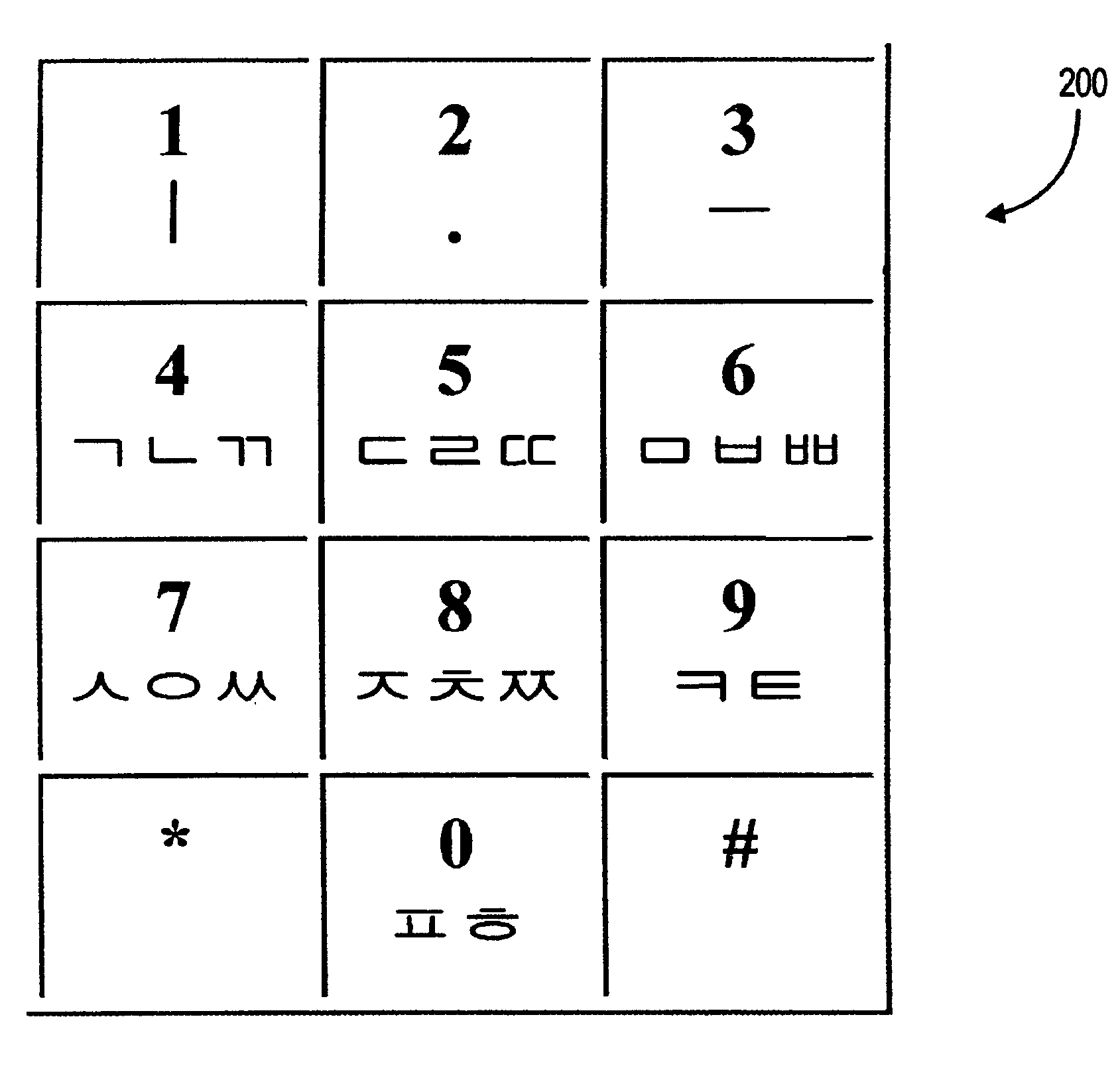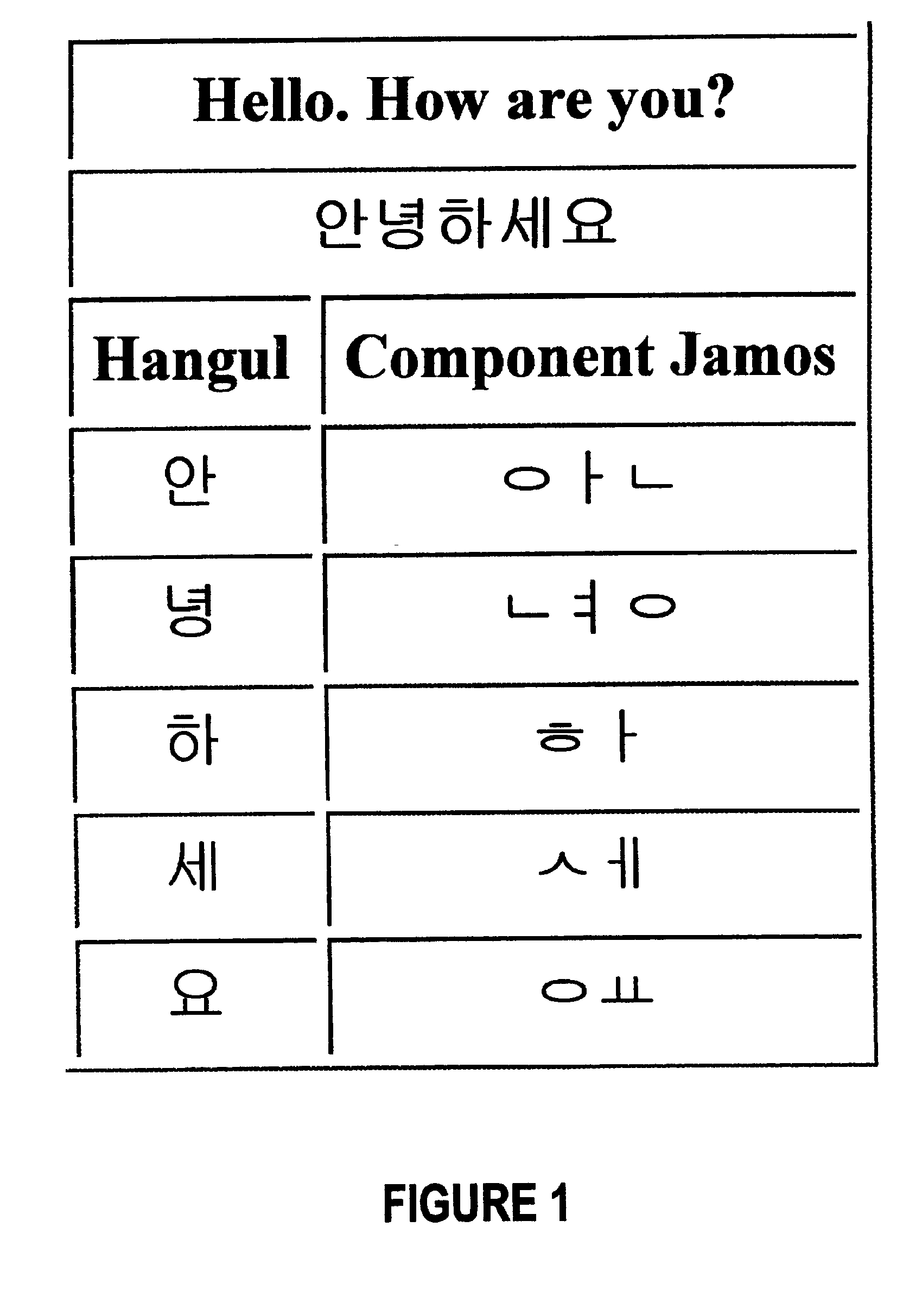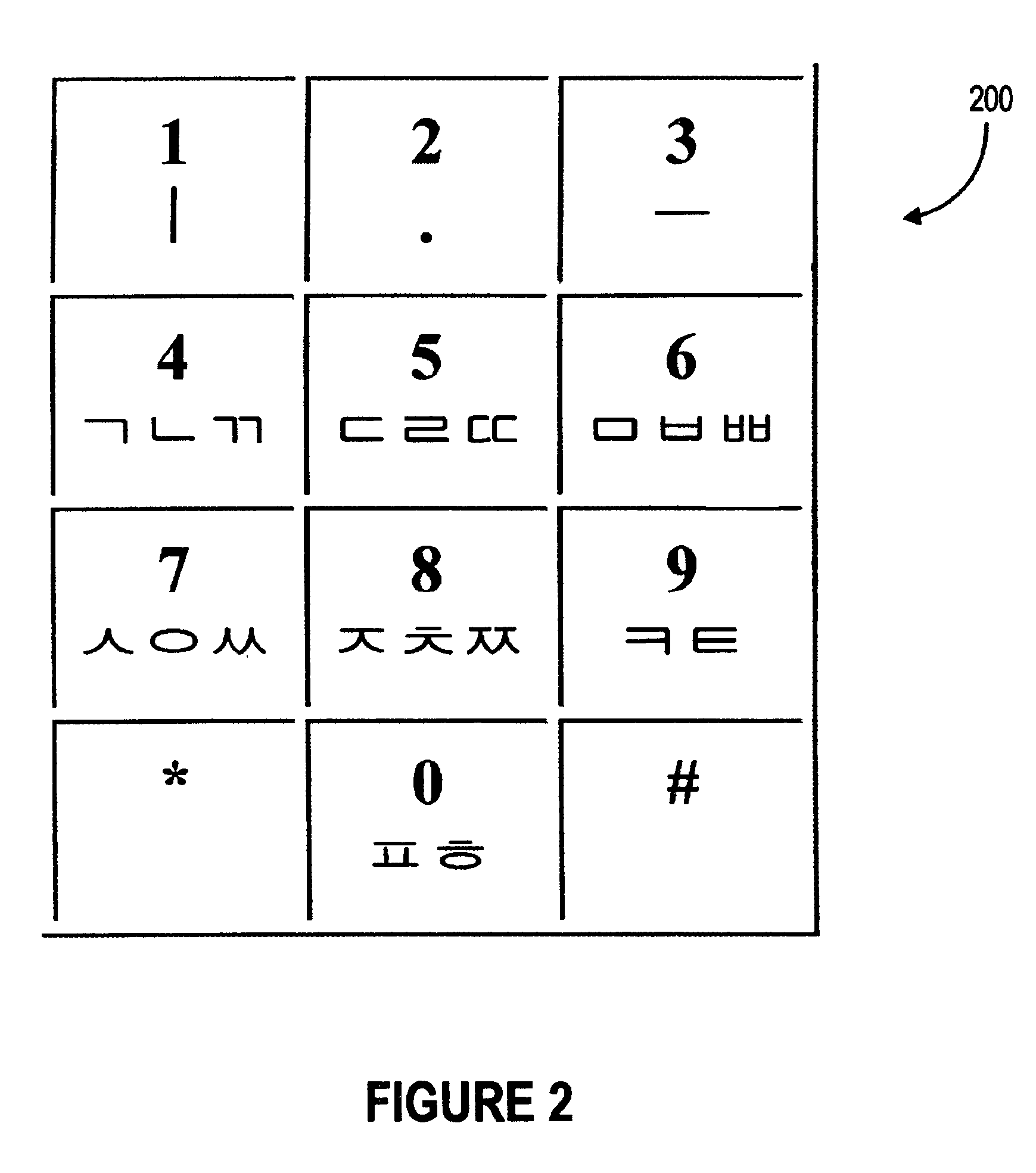Korean language predictive mechanism for text entry by a user
a predictive mechanism and korean language technology, applied in the field of text entry of electronic devices, can solve the problems of cumbersome and time-consuming multi-tap, inability to enter hanguls using a relatively small keypad, etc., to achieve rapid disambiguation of vowel jamos, rapid lo, and the effect of very rapid speculative a particular jamo
- Summary
- Abstract
- Description
- Claims
- Application Information
AI Technical Summary
Benefits of technology
Problems solved by technology
Method used
Image
Examples
Embodiment Construction
In accordance with the present invention, a reduced keypad 200 (FIG. 2) associates a number of keys with stroke categories for user specification of vowel jamos and a number of keys with appearance-based groupings of consonants for user specification. In the illustrative embodiment described herein, keys 1, 2, and 3 of reduced keypad 200 specify vertical, short, and horizontal strokes, respectively, while keys 4, 5, 6, 7, 8, 9, and 0 each represent a respective collection of consonant jamos.
To facilitate understanding and appreciation of the present invention by non-Korean speakers, the fundamentals of the Korean written language are briefly described in the context of the illustrative example of the phrase: “Hello. How are you?”FIG. 1 shows the five (5) hanguls to write out “Hello. How are you?” in Korean and the component jamos of those hanguls. Each hangul represents a syllable and includes a number of component jamos. The relative position of each jamo within each hangul is orde...
PUM
 Login to View More
Login to View More Abstract
Description
Claims
Application Information
 Login to View More
Login to View More - R&D
- Intellectual Property
- Life Sciences
- Materials
- Tech Scout
- Unparalleled Data Quality
- Higher Quality Content
- 60% Fewer Hallucinations
Browse by: Latest US Patents, China's latest patents, Technical Efficacy Thesaurus, Application Domain, Technology Topic, Popular Technical Reports.
© 2025 PatSnap. All rights reserved.Legal|Privacy policy|Modern Slavery Act Transparency Statement|Sitemap|About US| Contact US: help@patsnap.com



